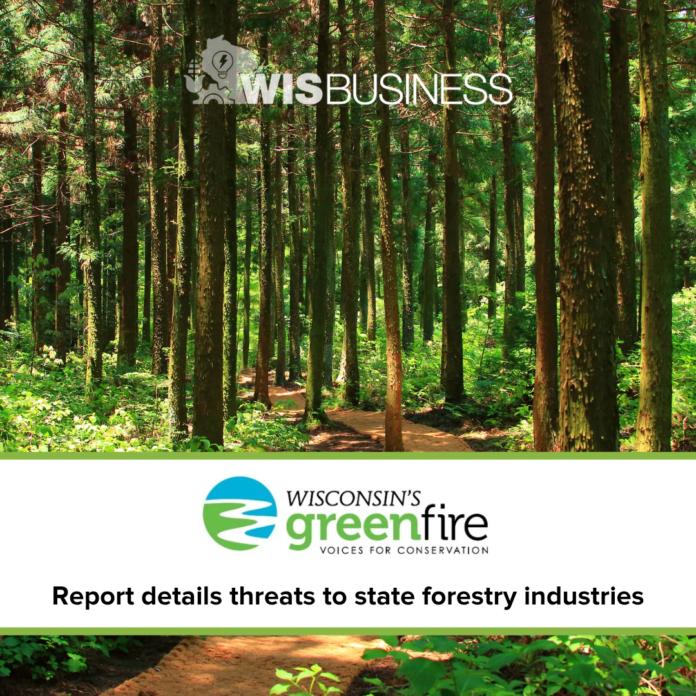Wisconsin’s Green Fire says the state’s $37 billion forest products sector is threatened by the loss of key tree species, “increasingly unstable” markets for forestry products and mill closures.
The nonprofit conservation group recently published its report, “Wisconsin Forests at Risk: Engaging Wisconsinites in Another Century of Forest Conservation.” It highlights a number of “serious environmental and economic threats” to these resources, with authors calling for new statewide efforts to safeguard Wisconsin’s forests.
About half of the state — 17.5 million acres — is covered in forests. Of that, 9.7 million acres are owned by families or individuals, while another 2.4 million acres are locally or county-owned. A further 1.6 million acres are considered state lands, 1.5 million acres are national forest and another 1.5 million are corporate owned.
“If we want to continue enjoying the benefits provided by our forests, from sawlogs and pulp to clean air and clean water, Wisconsin needs to take new steps as leaders in forest conservation,” WGF Executive Director Meleesa Johnson said in a statement. “We want everyone at the table to plan for the future of our forests.”
The report notes important tree species that make up these forests are at risk, pointing to the loss of ash trees due to infestations of the emerald ash borer as “just one prominent example with high economic and ecological consequences.” The group is urging leaders in the state to step up efforts to help at-risk tree species recover.
Linda Parker, former forest ecologist for the Chequamegon-Nicolet National Forest in Wisconsin, says she’s seen once-thriving lowland ash forests become “dense thickets of buckthorn, honeysuckle and reed canary grass” as the trees have been sickened and killed by the pest insect. She emphasizes the tree’s uses as animal habitats as well as in paper and wood product production, construction, the maple syrup industry and more.
“If we want to keep these benefits, we will need to increase our investments in forests to meet today’s and tomorrow’s emerging challenges,” said Parker, who retired in 2022 after 30 years working as a forest ecologist.
Meanwhile, markets for forest products such as pulpwood, lumber and wood veneer are “changing rapidly” as long-term declines in the pulp and paper sector are driving the closure of pulp mills in the state. Five such mills in Wisconsin have closed since 2020, report authors note, arguing the state needs “new and increased investments” to address this decline.
These mill closures have an impact on private forest owners, the report shows, as logging contractors no longer purchasing timber leads to lower income and fewer forest management options for these owners. Once their income becomes less reliable, many of these owners will sell the most valuable parcels for development, reducing the state’s forest assets.
While these owners are seeing new income opportunities in the market for forest carbon offsets, the report notes these markets have been somewhat limited until just recently.
Wisconsin’s Green Fire also highlights the environmental benefits of the state’s forests, which offset up to 15% of human-caused greenhouse gas emissions in Wisconsin. The ability of trees to sequester carbon enables this impact, but authors warn the “ability of forests to continue providing a positive role in a changing climate will be negatively affected” by the trends described in the report.
See the release.






